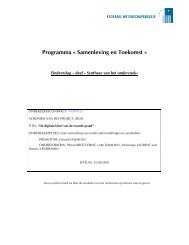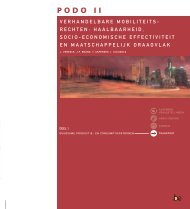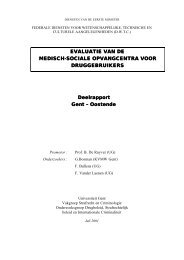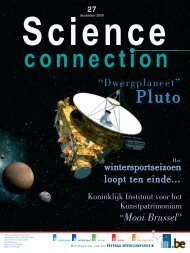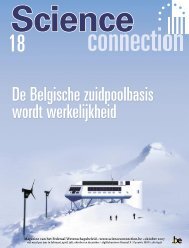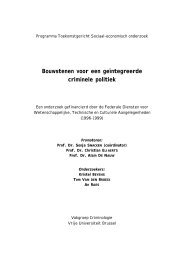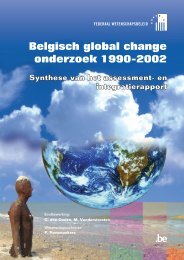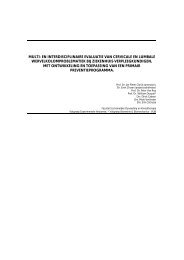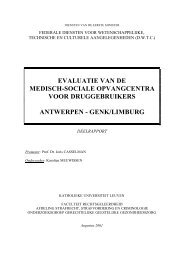chapter 3 inventory of local food systems
chapter 3 inventory of local food systems
chapter 3 inventory of local food systems
You also want an ePaper? Increase the reach of your titles
YUMPU automatically turns print PDFs into web optimized ePapers that Google loves.
Project CP/59 - “Instruments and institutions to develop <strong>local</strong> <strong>food</strong> <strong>systems</strong>”<br />
Annex: Methods and assumptions used in the calculations <strong>of</strong> the ecological impact<br />
In general<br />
• Transport energy and emission calculations are based on figures <strong>of</strong> van Essen et<br />
al. (2003).<br />
• Indirect emissions and energy uses caused by production, maintenance and<br />
dissembling <strong>of</strong> the vehicles and infrastructure are not included in the energy and<br />
emission factors.<br />
• Traffic jams are also not included, because their effect on the total emissions <strong>of</strong><br />
road transport appears to be limited (van Essen et al., 2003).<br />
• No other contributions to the greenhouse gas effect than CO2 emissions are<br />
included. Although there are a lot <strong>of</strong> other gasses, like methane, that have a high<br />
greenhouse gas effect.<br />
• Manipulation energy uses and emissions like loading and unloading with fork-lift<br />
trucks, etc. are not calculated as these are complex to ascribe to a specific amount <strong>of</strong> a<br />
specific <strong>food</strong> item.<br />
• The transport energy use is the energy use per ton-kilometer, summed with the<br />
energy use <strong>of</strong> refinery, multiplied by the distance traveled and divided by 1000 to get<br />
the final data in MJ/kg <strong>food</strong> item (van Essen et al. (2003)). The energy use <strong>of</strong> refinery is<br />
the energy use per ton-kilometer multiplied by the energy ratio for refining. This energy<br />
ratio varies along different kinds <strong>of</strong> fuel and different oil fields. Here we have set it on<br />
9% for all fuels, based on a comparison <strong>of</strong> Edwards et al. (2003), Meul et al. (2005) and<br />
van den Brink et al. (1997).<br />
• For transport CO2 emissions a comparable procedure is followed: the energy use<br />
per ton-kilometer is multiplied by the CO2 emission factor <strong>of</strong> that vehicle, summed with<br />
the CO2 emissions <strong>of</strong> refinery and then multiplied by the distance traveled and divided<br />
by 1000 to get data in g CO2/kg <strong>food</strong> item transported.<br />
• For these transport energy and CO2 emission calculations, some estimations had<br />
to be made on transported loads in tons per vehicle, on load factors and on percentage<br />
<strong>of</strong> productive rides. For most cases averages <strong>of</strong> these figures are known or standards are<br />
used (Van Essen et al., 2003).<br />
• Precise effects <strong>of</strong> transport to and from loading points are not known. For this we<br />
used the default energy and emission estimations <strong>of</strong> Van Essen et al. (2003) in the<br />
calculations.<br />
• All distances are counted double as most rides are back and forth. Exceptions to<br />
these are pick-up and drop-<strong>of</strong>f rounds, these are counted single and as if half <strong>of</strong> the<br />
whole load is transported during the whole round.<br />
SPSD II - Part I - Sustainable production and consumption patterns - Agro-Food 52



